The blog post has to be done within the day, and the deadline’s too close for comfort. Your writer’s first draft comes in, and everything looks off.
Now you’re stuck re-explaining what you actually wanted.
If you’ve experienced this far too often, it’s likely you need a content brief. This brief shows what details to cover and keep in mind.
Put together a good one, and you can save time going back and forths and actually deliver quality content the first time.
What is a content brief exactly?
We answer it in this guide. Learn what elements to include, how to write one effectively, and common mistakes to avoid.
Key Takeaways
- A content brief is a guide that defines a piece of content’s goals, audience, structure, and key points, giving writers direction before they start.
- In SEO, content briefs outline keywords, search intent, and campaign goals. This keeps each piece aligned with best practices and marketing objectives.
- Effective content briefs include essentials like tone, target audience, keywords, structure, references, and CTAs.
Definition of a Content Brief

A content brief is a document that outlines what a writer needs to do when writing a piece of content.
Aside from blog posts, these briefs can be used for white papers, product descriptions, email campaigns, and even video scripts.
Content managers, marketers, and SEO specialists are typically the ones who prepare content briefs.
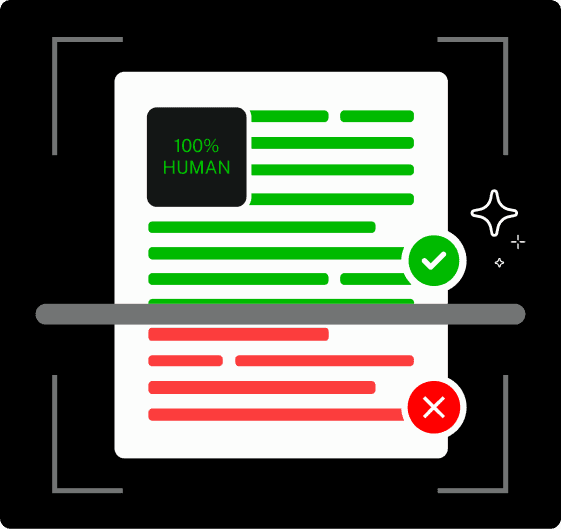
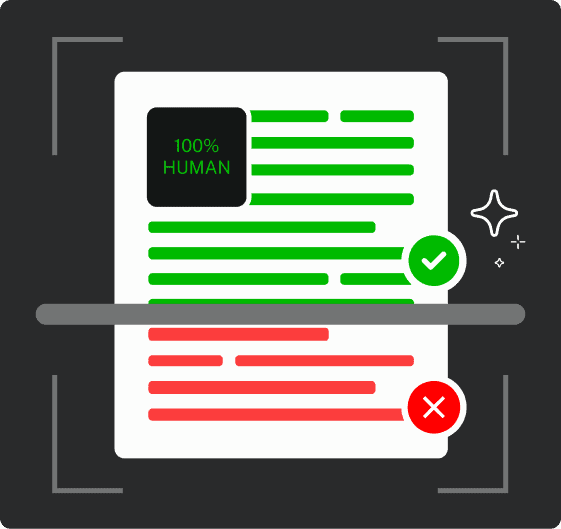
Never Worry About AI Detecting Your Texts Again. Undetectable AI Can Help You:
- Make your AI assisted writing appear human-like.
- Bypass all major AI detection tools with just one click.
- Use AI safely and confidently in school and work.
These help creators write better content by removing the guesswork and making sure the piece serves its purpose with little to no edits needed.
What a Content Brief Includes
There’s no one-size-fits-all content brief. Every project has its own specific needs.
While most briefs will contain the essentials, such as goals, audience, SEO, and key points, you can easily modify them and add other components.
For instance, a SaaS company writing about a new feature might include listing the feature’s benefits, target user persona, and competitor comparisons.
A non-profit organization creating a blog post on fundraising tips, on the other hand, could add donor personas, event details, and a call-to-action (CTA) for sign-ups.
The point of using a content brief is to give writers full context upfront.
Your content brief is only as strong as the details you provide, so feel free to customize.
Pro tip! One of today’s content marketing trends is platform-specific content. This means that content you post on LinkedIn might not work as well on Facebook, and vice versa.
Remember to adjust your content brief based on the platform and intended audience for better results.
Content Brief vs. Creative Brief
At first glance, a content brief sounds very similar to a creative brief. And while both of them outline expectations and specify what’s needed, they serve different purposes.
A content brief mainly focuses on content writing.
For written work like blog posts, articles, and SEO-driven content, you’ll need a content brief to specify structure, keywords, and key details for them to deliver on their goals.
Meanwhile, a creative brief takes a broader approach. It’s used by design, branding, and ad teams to guide the visual and messaging of a project rather than the writing itself.
These can be used for marketing, website design, video production, social media campaigns, and product launches.
Key Elements of a Content Brief
An effective content brief sets the writer up for success by providing clear instructions and necessary details in each of its key areas.
These are the main elements to include when making a content brief:
- Project title and goal: Defines what the piece is named and what it’s about.
- Deadlines: Sets the dates for delivery and review stages.
- Target audience: Who the content speaks to and what matters to them.
- Customer stage: If writing for a product or service, this indicates where the audience is in the sales funnel and their search intent.
- Keywords, meta, and links: These list down the priority keywords, meta descriptions, and guidelines for internal and external linking.
- Tone and style: Details on the tone of voice (TOV), perspective, and any style preferences.
- Structure and outline: Offers suggested headings and flow for the piece.
- Competitor info and resources: Shares examples for the writer to outperform and other trusted sources for research.
- Images: Included when the piece requires visuals, including their placement.
- AI policies: A set of rules when using AI for research or editing, and running through trusted AI detection tools.
With well-defined AI policies in place, writers can use AI tools to create high-quality work efficiently.
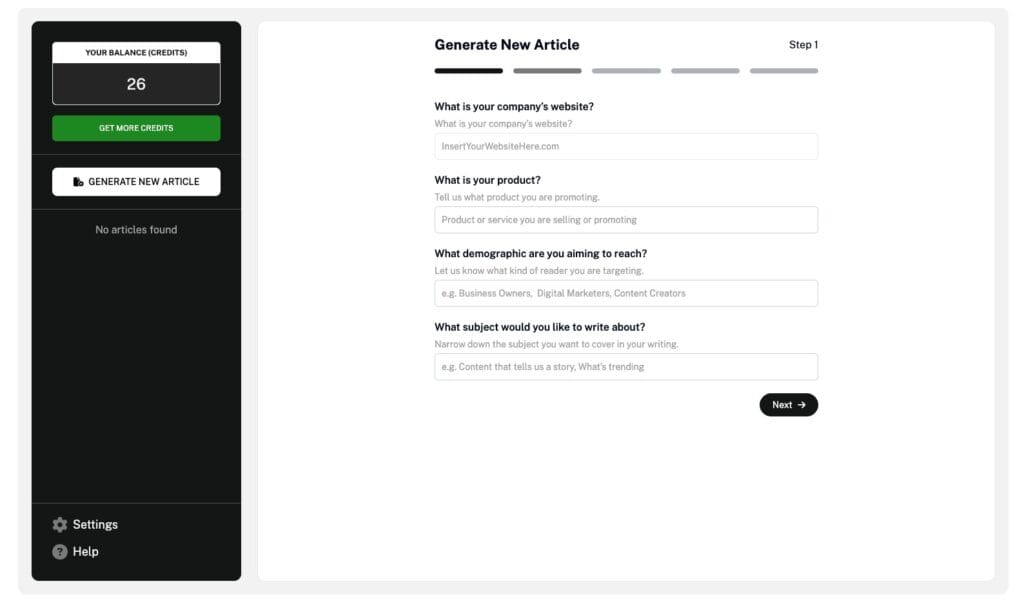
Tools like Undetectable AI’s SEO Writer work best when paired with a solid content brief. You’ll be guided through simple steps, using your brief to fill in the details.
Within minutes, you’ll get a fully optimized article built on keyword research and competitor analysis, complete with images and credible links.
Whether it’s a listicle, how-to guide, review, or detailed comparison, Undetectable can deliver the content you need.
How to Write an Effective Content Brief
Just because you have a content brief, it doesn’t make your content fail-safe.
An effective content brief gives clear, actionable direction that saves time and avoids rewrites.
Here are the steps to writing a content brief that gets results.
Step 1: Define Objectives and Goals
Start by explaining why the content should exist.
Are you aiming to drive more traffic to your website, rank for keywords, or gain leads? Specify your end goals before shaping everything else.
When writing objectives, be as precise as possible.
For example, rather than only saying that you want a product mentioned, say that you need to see how the product solves problem X for the Y audience to increase sign-ups.
Specificity keeps the writer focused and avoids the risk of going off-track.
Step 2: Research Keywords and Competitors
Not all writers are trained in SEO. An ideal approach is to teach the writer how to implement SEO aspects in plain language.
What to usually include:
- A primary keyword, and around five supporting terms
- Search intent (informational? transactional?)
- Links to competitors with notes (e.g., what they’re missing, what statistics give you a leg up)
With these, the writer can create fresh content that stands out and provides more value.
Step 3: Provide Structure (H1, H2, H3 Guidance)
The structure is the skeleton of the piece. This is where most drafts fail because expectations aren’t met, or they miss a logical flow that readers (or search engines) expect.
You have to provide guidance on how you want the piece to be organized.
Consider mentioning the following:
- Suggest a headline (H1) and main subtopics (H2/H3/H4).
- Required sections (e.g., CTA at the conclusion)
- Preferred formatting (e.g., bullet points, tables, FAQs)
- Word count range in total or per section
Providing structure prevents disorganized drafts and keeps the writer aligned with your goals.
Step 4: Include Examples and References
Back up your content brief with examples, trusted sources, or previous content that matches the quality, tone, and accuracy you’re expecting.
These set a benchmark instead of leaving them hanging and having to interpret what “good” looks like on their own.
We know how time-consuming writing a content brief will be, so why not use Undetectable AI’s Grammar Checker to save you time refining it.
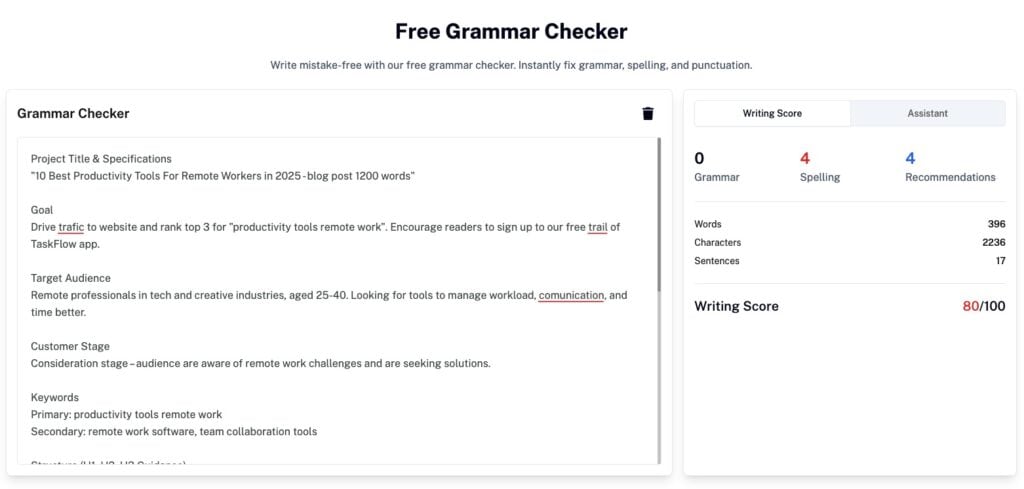
Paste your text, and the free Grammar Checker instantly flags grammar, spelling, and punctuation issues. Accept the suggestions with a click, and your text will be fixed. No extra steps necessary.
As you start using AI tools for content creation, there becomes a need to humanize content.
That way, your brief won’t be flagged as AI-generated, protecting your authenticity and credibility.
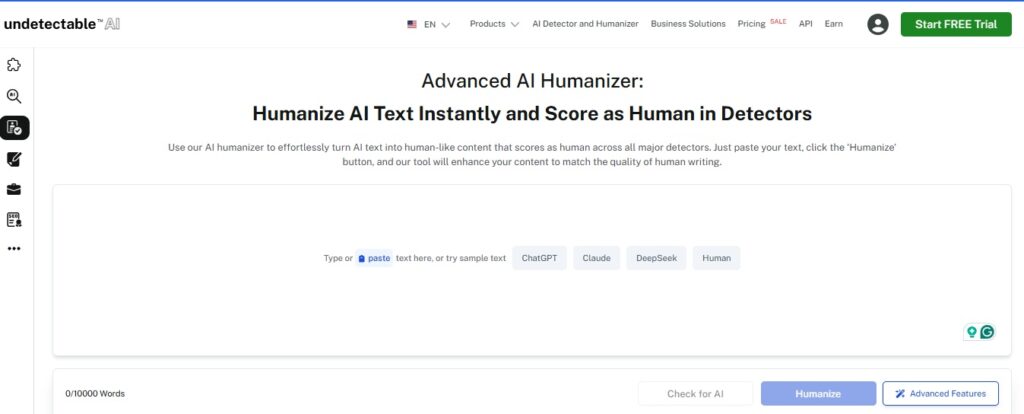
The Undetectable AI Humanizer is here to help. Using a custom fine-tuned AI model with pre- and post-processing, the tool adjusts tone, style, and syntax to deliver natural content every time, and in a way that retains your real voice when writing.
With Undetectable, you can be confident in maximizing your writing potential with AI.
Common Mistakes in Content Briefs
Messy content briefs might derail the project before the writer even starts.
Watch out for these common mistakes when writing content briefs:
- Assuming the writer knows: Without providing proper context and specifics, the writer might get the direction wrong. This leads to major rewrites that will delay the project.
- Being too rigid: While content briefs help guide the writer, being overly strict with the outlines can kill their creativity and lead to robotic or generic content.
- Failing to update briefs: Outdated statistics or links can undermine the credibility of the piece, especially when it comes to making timely content.
- Missing insights: Leaving out your target audience, pain points, or other background details might result in irrelevant content that disconnects from the readers.
- Ignoring visuals: Skipping the visual direction for the piece, like images, charts, tables, and embeds, might delay production as content managers and designers scramble to find and generate assets that fit at the last minute.
Avoiding these mistakes makes briefs actionable instead of confusing, saving time and frustration for everyone involved.

Content Briefs in SEO and Marketing Strategy
Content briefs have the power to connect strategy with execution.
In SEO and marketing, these briefs can ensure that every piece of content you release is consistent, aligns with your campaigns, and is optimized for search.
These are some of the many ways content briefs can be used to enhance your SEO and marketing efforts.
Our Undetectable AI’s Writing Style Replicator helps you customize your SEO content to match your brand’s voice effortlessly.
It studies your writing patterns, tone, and phrasing to recreate your unique style across every piece of content you produce.
Whether you’re drafting blog posts, product pages, or marketing copy, the tool ensures everything stays consistent with your style guide while keeping your message natural and human.
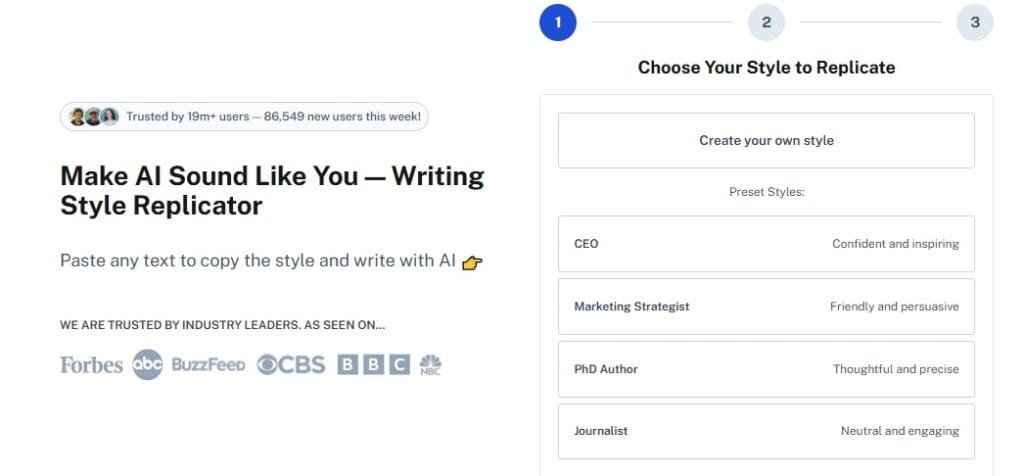
How Agencies Use Content Briefs for Scale
Agencies are known to handle multiple projects at once.
They can use content briefs to keep quality consistent across the board while still moving quickly.
Here’s how content briefs help agencies scale efficiently:
- Standardizes instructions: Provides specific goals, tone, and structure to related projects.
- Streamlines collaboration: Aligns writers, editors, and clients on what’s expected.
- Reduces revisions: Precise and well-thought-out briefs minimize edits.
- Maintains SEO consistency: Ensures all SEO practices are applied across all campaigns.
- Accelerates turnaround: Writers can begin right away because they’ll have everything they need in the brief for reference.
The end goal is simple: to deliver high-quality, consistent content at scale without compromising accuracy.
Role in Enterprise Content Workflows
Enterprises manage content at a massive scale, juggling teams and departments and sometimes across multiple locations.
They often implement a content workflow for a seamless process of creating, reviewing, and publishing content.
Enterprises can benefit from content briefs to keep the content machine running.
How? Content briefs can act as a sort of “single source of truth” for writers, editors, and stakeholders to use as guidance on writing requirements.
This avoids miscommunication between teams, speeds up approvals, and makes sure that all content is aligned with the overall company-wide strategy.
To use a content brief effectively, attach it to your content workflow so every step, from writing to publishing, follows the brief as the main guide, keeping everyone on the same page.
Connecting Briefs to Content Calendars
A content calendar schedules what gets published and when.
Much like with a content workflow, each task in that calendar can link to a content brief to act as its framework.
Here’s how content briefs boost content calendars:
- Backs each piece with research: Every task will be supported by clear objectives and background information.
- Ready-to-execute assignments: Writers won’t be in the dark, with all the information needed to start.
- Keeps deadlines realistic: Because the briefs can link directly to the content calendar, you can set timelines and avoid bottlenecks.
- Tracks progress with ease: Offers a clear view of each stage in the content process so nothing slips through the cracks.
Connecting content briefs to your content calendar makes it easier to plan, execute, and publish content.
Detect AI patterns and humanize your writing in seconds—use the widget below.
Your Blueprint for SEO Success
A strong content brief turns ideas into structured, SEO-optimized content that hits your target keywords, aligns with audience intent, and supports overall marketing goals.
By giving writers guidance on structure, tone, and purpose, you reduce revisions, save time, and increase the likelihood that your content ranks and converts.
To take it a step further, use Undetectable AI to supercharge your writing process. Its suite of AI tools ensures your content briefs (and any other content you make) stay polished, authentic, and SEO-ready.
Before you get started, explore Undetectable AI’s SEO Writer for optimized drafts, the Grammar Checker for error-free writing, and the AI Humanizer for natural flow.
Get started for free and see how content briefs and Undetectable work together to streamline your content creation.
